A couple days back, I posted a tribute/review of Mangazine issue 1, the first comic book published by a tiny little start-up calling themselves "The Antartic Press" (yes, without the 'c' -- they fixed that later). It's incredible for me to think not only that AP has been around for thirty-five years, but also that I've been around longer than that.
It doesn't seem that long, since I didn't start reading anything AP produced until the mid-90's when I picked up my first Ninja High School graphic novel...
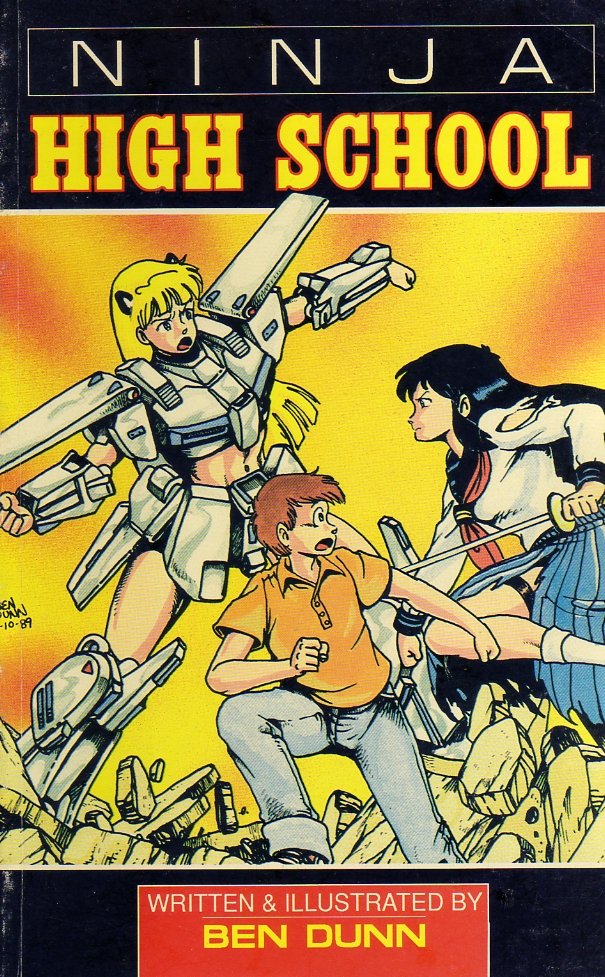
...but despite being published by Malibu Graphics (whose 'Eternity' imprint did all-color editions of the original AP publications), I still consider this to be my first AP book.
This softcover was a godsend to a dorky misfit who was, himself, in high school. Put glasses on Jeremy Feeple, and I could have played him in a movie. And while I never experienced the delight of multiple women waging war over my body, there are some elements of growing up, especially the ridiculous teenage years where nothing seems to make sense, that stand out among the silliness. Ninja High School was a funhouse mirror held up to that peculiar institution of high school from the 80's and 90's. It was the US's first manga-style harem (a trope where multiple women find themselves in either deliberate or accidental competition for one specific guy) comic. While one light-haired girl and one dark-haired girl fighting over the affections of a single dweeb was nothing new to anyone familiar with Archie Comics, Dunn's unwillingness to stick to anything resembling real life gave Ninja High School a feeling all its own.
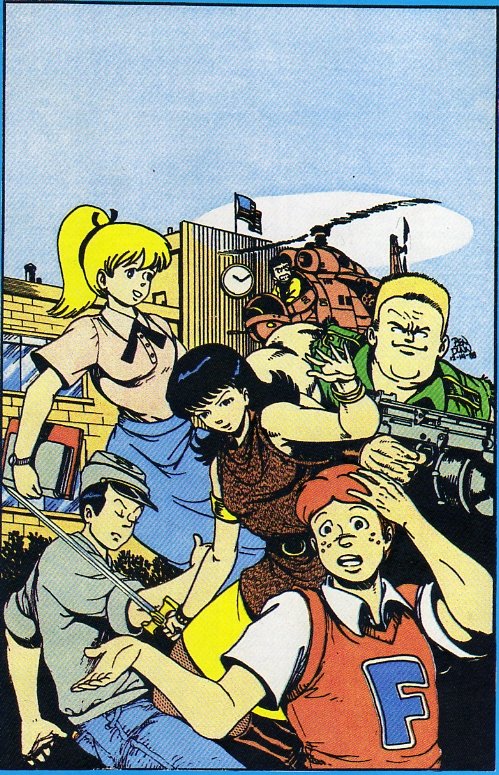
It was unashamedly silly, poked fun at everything from American action icons like Rambo, Robocop and The Terminator, to Japanese imports like Fist of the North Star and Power Rangers, to British staples like Doctor Who. It lived on one-dimensional characters who could be counted on to advance the plot through gratuitous stupidity or absurd one-liners. Professor Steamhead's declaration that "The world can be saved by steam!" or Arnie's solution to every problem being the Stallone-esque application of gratuitous violence never fails to elicit a chuckle, even all these years later. Not because it's high-brow humor, but because it reminds me of being a kid, when that stuff really was funny to me.
The thing is, while Ben Dunn's intentions for the book might have been simply to ape the conventions of similar goofy stories told in Japanese manga and/or anime from around the same time (see: Urusei Yatsura, Ranma 1/2, and virtually anything else Takahashi Rumiko was involved in), Ninja High School didn't let him.
By virtue of its huge cast of characters, which continued to grow as the book finished its first twelve issues and Dunn introduced new plots to explain some of the outrageous contrivances from the first story arc collected in the above book, Ninja High School quickly outgrew the small town of Quagmire. The rivalry between Ichi-kun and Asrial remained much the same, as did Lendo's attempts to alternately dominate the town and win Itchy's affections, but the story branched out and grew. We were introduced to a time traveler, a witch and her familiar, Professor Beanhead (a man convinced the world will be saved by beans), a demon named Stanley, and Asrial's own intergalactic counterpart Leeanna who, as a Zardonian, hates Asrial because the Salusian Interstellar Conglomerate and the Zardon Empire are currently at war.
In fact, a look at the cover of Ninja High School Yearbook #1 from 1989, the book's first annual, should give an idea of just how many weirdos ran wild through the Dunn-iverse:

Which leads us to another note about Antarctic Press: they weren't afraid to let other people play in their sandbox.
While Ninja High School started as Ben Dunn's baby, the mammoth number of secondary and tertiary characters spawned by the book left unlimited potential for expansion and exploration by others. When Dunn started receiving fan artwork, story ideas, and even full-fledged mini comics from creative types, he had a revelation: other people loved these characters just as much as he did, and what better way to reward their creativity than to publish their efforts? Thus was born the idea of yearly books where much of the content came from fan submissions. The first of these was the 56-page Ninja High School Yearbook, which made its debut in 1989.
While the book opens with a story written and drawn by Dunn, the remainder of the pages come from people with no prior connection to the comic. Some, like a pre- Gold Digger Fred Perry, would go on to become staples of AP's future lineup, while others like Steve Stamatiadis, C.A. Stormon, and Ian Gould would use these pages as a springboard to their own ventures, both with AP and elsewhere.
As Ninja High School grew in popularity, and Antarctic Press grew as a company, the demand for books of this type increased and Ben worked to meet that demand. Girls of Ninja High School, debuting in 1991, was a yearly anthology featuring stories specifically focused on the litany of woman who populated Quagmire:
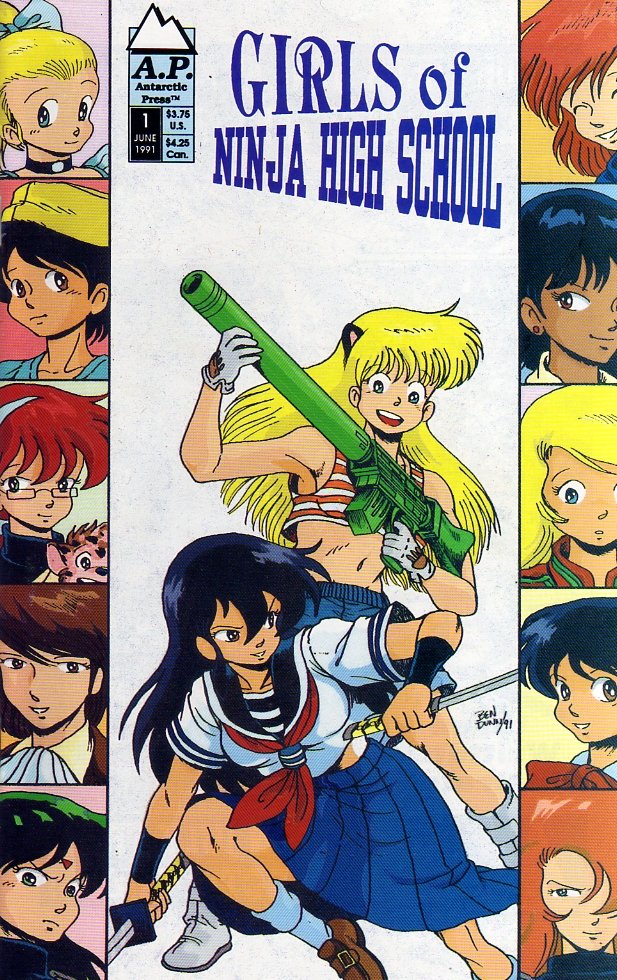
The Ninja High School Swimsuit Special, beginning in 1992, printed summer and beach-themed stories and artwork:

Small Bodied Ninja High School, also making its debut in '92, gave creators like Robert DeJesus and Tyrone Ford, who enjoyed drawing in a chibi (small & cute) style their own playpen:
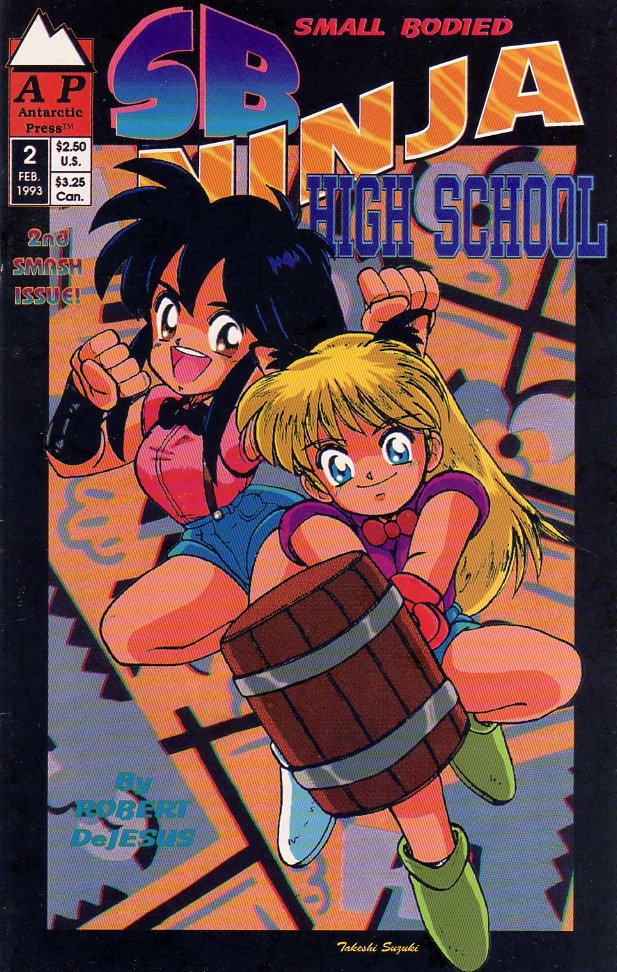
The NHS crew even tangled with other properties and universes from time to time, crossing over with Fred Perry's own Gold Digger for 1994's two-part "A Science Affair" story arc...
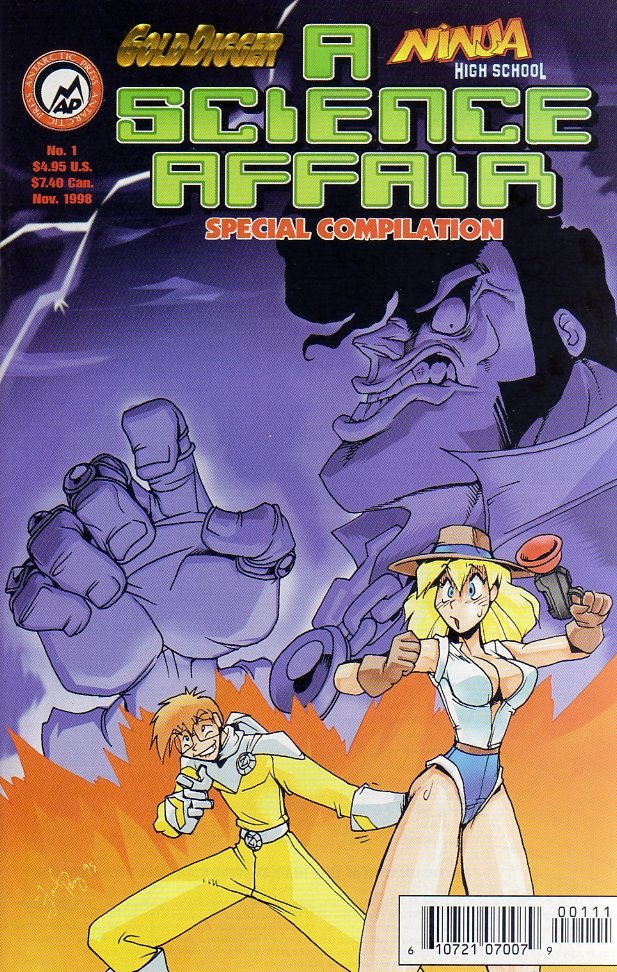
...to a match-up with none other than Speed Racer in 1993:
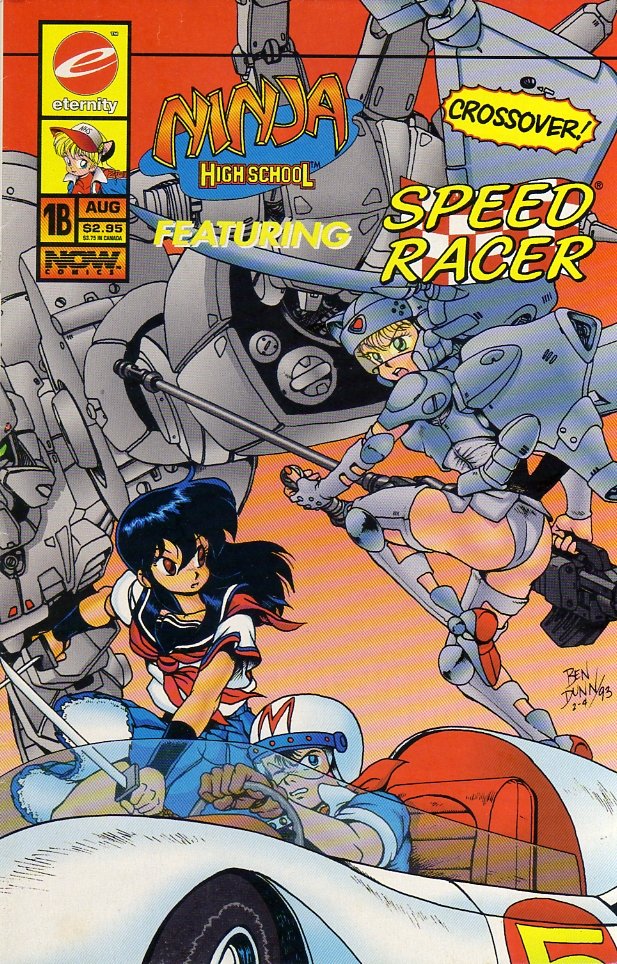
Ben even volunteered the use of his characters, his artwork, his company, and his time to help his brother Joe, a medical doctor, publish a free comic aimed at helping teens understand STDs:
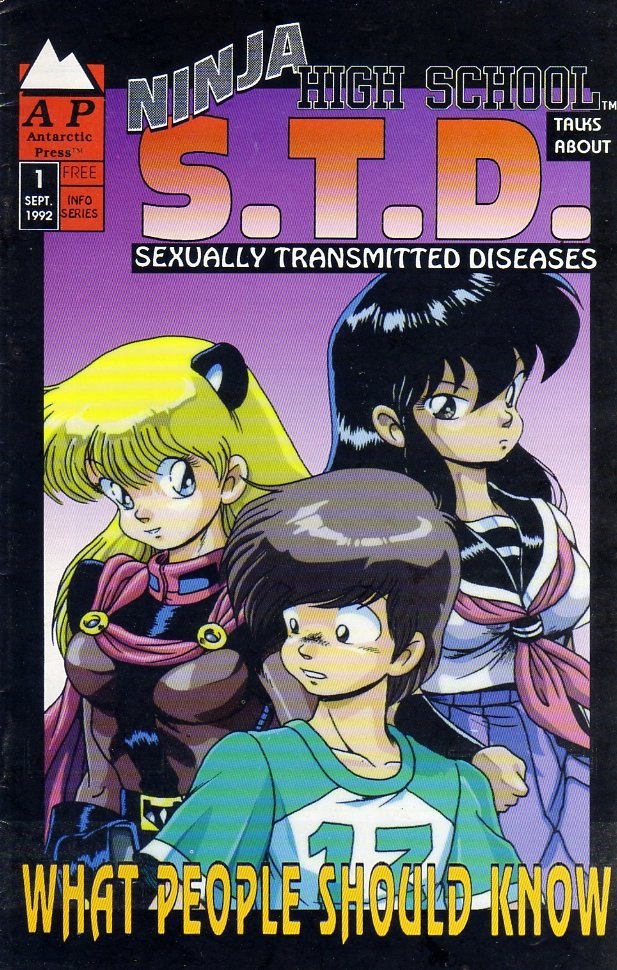
The series deserves to be remembered for this stuff alone.
But Ninja High School is more, even, than all this. While it started out as a silly limited series about the trials and tribulations of one ordinary teenage boy, NHS outgrew its origins and became more than that. As Ben's skills as a writer and artist grew, and as more and more people became attached to the project in one form or another, something magical occured. Ninja High School...grew up.
That's not to say you'd ever mistake it for something along the lines of Preacher, and it always told stories from that view-askew perspective it had adopted since day one, Ninja High School started to take itself a little more seriously.
Story arcs opened and closed. Conflicts resolved themselves. People grew up. Characters died, and they didn't come back next issue. Within the pages of Ninja High School, readers met characters like Sammi, a young woman raised as a boy after her father couldn't stand the shame of his first-born not being male, who struggles with keeping up the front of being "one of the guys" around her family while at the same time desiring to grow into her budding feminine side. Like most of the characters, she's initially played as a one-note gag but soon comes into her own as a more fleshed-out person and less of a stereotype.
There are poignant moments that could have been played for laughs, but are taken seriously. Asrial has an on-going feud with another female character which suddenly and unexpectedly ends in the middle of one issue when this opponent is dealt a lethal injury. Cradling her head in her lap, Asrial listens as this foe tells Asrial she never really hated her, and asks for a kiss as the final request of a dying enemy.
Asrial does so without a second thought. Not because it's lewd or titillating to the audience, but because granting the wish of a dying enemy is the honorable thing to do, and its an element of her character, as a Salusian noble, which has grown with her over the years. While this may seem like nothing special today, in the mid-90's positive gay, lesbian, and bisexual representations were few and far between. Asrial could have easily had the "no way, we're both girls, EWWWWW!" freak out moment we'd expect, but she'd grown beyond that.
In time, all the characters do.
Ninja High School today looks very different from the Ninja High School of its early days. Dunn has passed the torch on to different writers and artists over the years. The series has changed locales; changed its focus from Jeremy to his younger brother Ricky, then again to the children of the main characters.
It, much like the comics industry, is in a never-ending state of flux. The overall feeling is one of the characters leading the writers, instead of vice versa. What started out as a gag series of four issues instead turned into more than three decades of stories spanning well over two hundred issues of bimonthlies, monthlies, annuals, spin-offs, team-ups, and fan creations. It's shown the staying power of the small press, and given a launch pad to countless creators along the way.
While Antarctic Press cannot boast the size of other studios like Image and DC, and Ben Dunn may not be a household name like Todd McFarlane or Rob Liefeld, it's still one of the most important small-press operations ever to open its doors in North America. It, along with studios like Viz and Dark Horse, helped grow the fledgling manga community back in the 80's and 90's when it was still struggling to find a foothold in the West. And while many titles have come and gone under their banner, the most prominent, most enjoyable, and most important of all might just be this long-running story of Jeremy Feeple: an average boy in a not-so-average town and his not-so-average adventures, as envisioned by the decidedly not-so-average Ben Dunn.
Note: all images within this article were scanned from my own collection. Thanks for reading!
NHS went through a lot of the same notes early one-page gag webcomics did about 15-20 years ago. Exploitation Now, Queen of Wands, etc., all went through the same stages that NHS pioneered - starting as a gag book and then growing more serious, with continuity sticking after a while.
It reflects more on the creator rather than the creation, people having the desire and urge to grow, and thus their stories grow with them.
Yes, this. Absolutely. Ben Dunn had a lot of cooks in the kitchen over the years (including Fred Perry, who did a full year on it while Ben was busy with other stuff), but you don't get that growth without building up your characters and shaping the world around them. You nailed it, @elizibar. :)